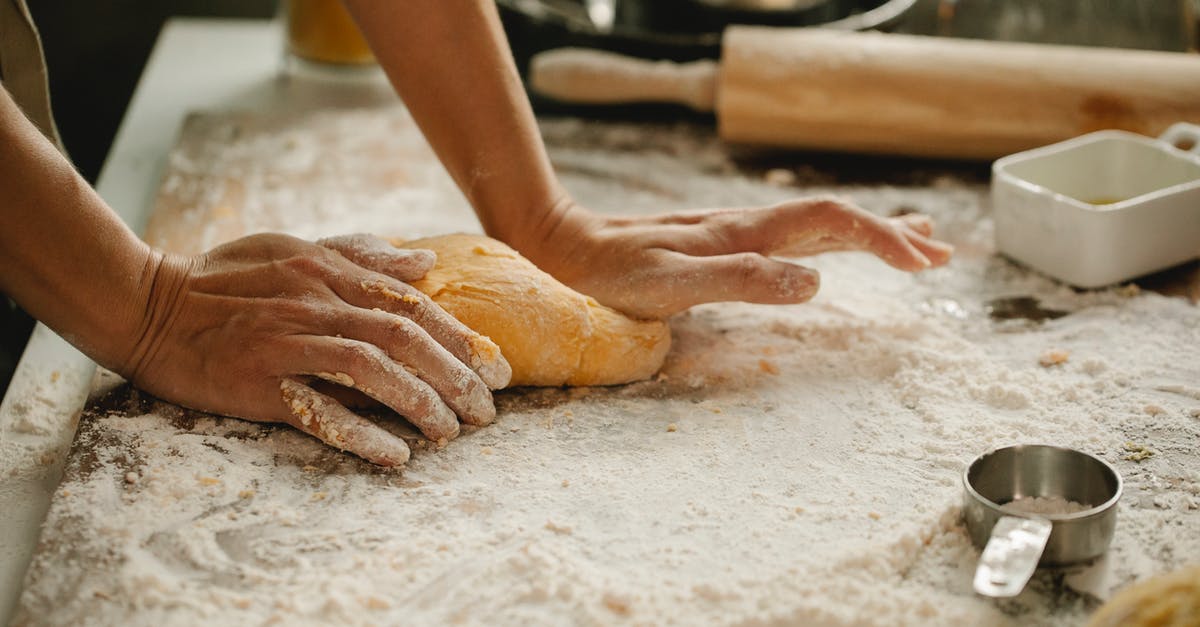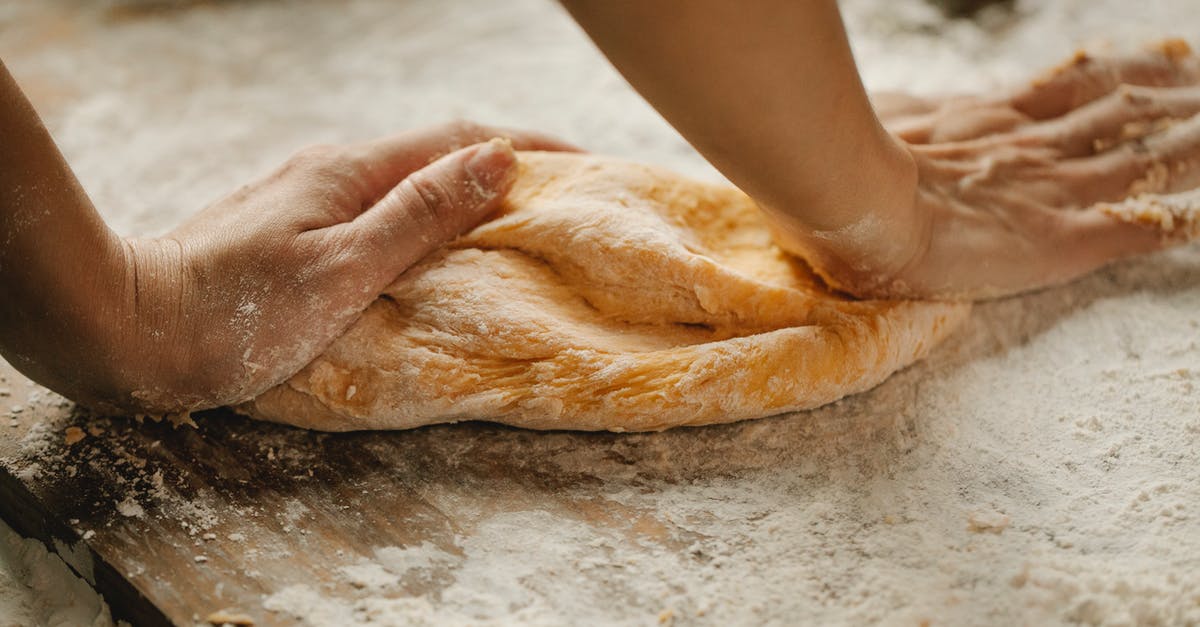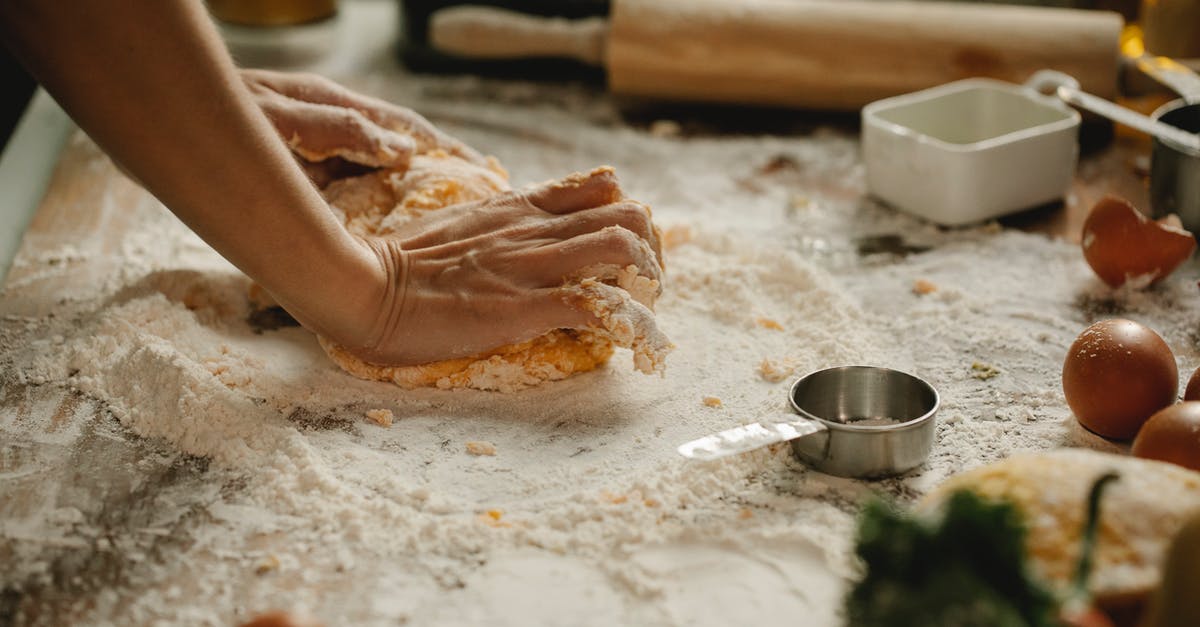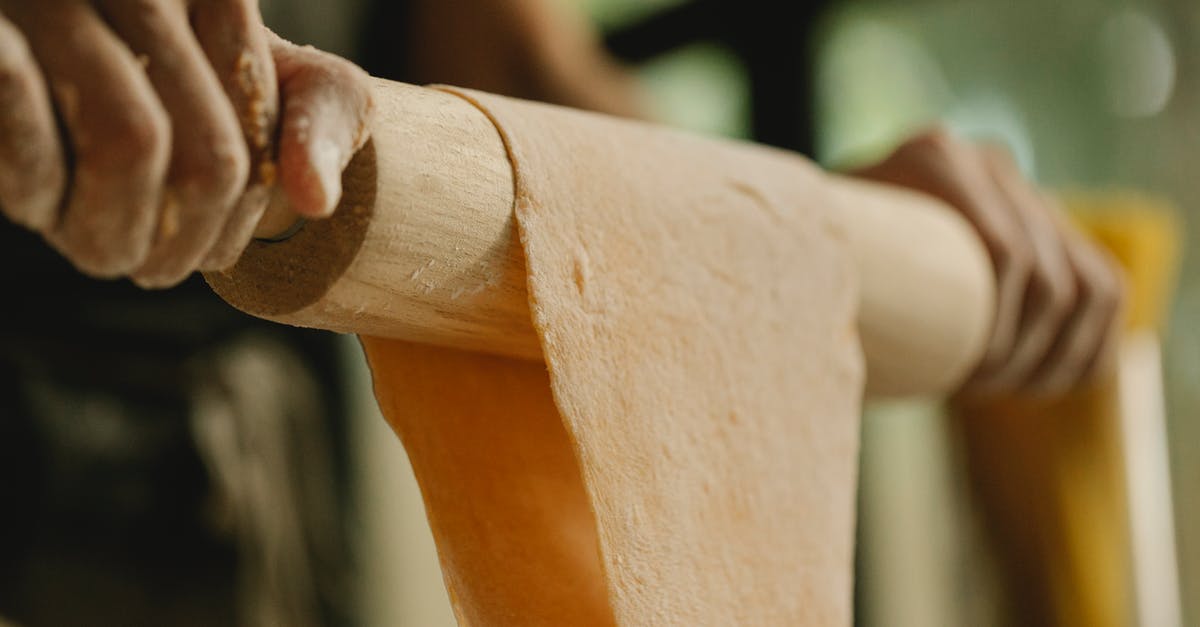When should food colouring be added to part of a batch of bread dough?

I recently made coloured swirled bread, in which different colours of dough (in my case a coloured and an uncoloured piece) were rolled together and baked in the same loaf to give an interesting novelty appearance. When I put it into the oven the poke test on the uncoloured dough rose up slowly, but the uncoloured sprang back a bit more quickly. The finished bread rose acceptably, but not spectacularly, and the coloured dough was somewhat denser than the uncoloured. The whole thing was a sourdough loaf if that makes any difference.
When should the colouring for the coloured piece have been added?
- after kneading? This is what I did. With liquid colouring, which seemed to colour individual strands of gluten, this required considerable kneading to distribute evenly. This amounted to nearly twice the amount of kneading as the uncoloured piece. Since the undivided full batch of dough had completed kneading (it was at windowpane) when I divided them, I might possibly have overkneaded the coloured piece. The uncoloured piece would also have undergone more fermentation than the coloured piece due to how long the extra kneading took (even in the fridge).
- before kneading?* This would have allowed the colouring to be more easily mixed in, but would also have required each colour of dough to be separately kneaded to windowpane strength as well as separately proofed. Not only would I need to be sure each piece was equivalently kneaded but also equivalently proofed. As with the other option this would leave one piece fermenting longer than the other.
EDIT: *before kneading referring to the point when the flour and water and other ingredients have been barely incorporated together and the result is still just a "shaggy mess" as some describe it. I assume that "kneading" is a specific stage of breadmaking for the purpose of gluten development, not merely an act of kneading at any point in the process.
Best Answer
I baked 3 or 4 loaves of challah last January over a month period to try and perfect a rainbow loaf of bread for a dinner party (Wizard of Oz and over the rainbow themed).
Loaf 1 I mixed ingrediants and worked the dough and then prior to kneading I used cake decorating gelled (Wilton brand) coloring. This required substantial kneading to fully integrate the coloring and probably caused the loaf to not rise properly from over work or inconsistent gluten formation.
Subsequent loaves required making the water and yeast mixture and dripping in 5-35 drops of liquid food coloring into measured amounts of liquid by weight. Each liquid amount depending on rainbow location varied and the apparent strength of the drops did too. The liquid mixture then had a consistent bright color and adding in the sugar, salt and flour proved to make for a consistent color shading throughout. The minimal quantity of the alcohol/glycol based coloring didn't appear to affect the texture and the need to over work the dough was lessened since the color was consistent from the beginning.
Using up to 7 different colors in 1 large loaf (both rainbow shaped in a large baked bowl and in a braided roll) did require a bit more effort than making 1 batch of dough and separating briefly after kneading to add color. However the effort was well worth it!
Pictures about "When should food colouring be added to part of a batch of bread dough?"



Quick Answer about "When should food colouring be added to part of a batch of bread dough?"
Dyed bread is made using the same method as regular bread. You merely add 1 to 2 tablespoons of food coloring during the first kneading to provide the color. But you can do a more than dye the entire loaf one color.How do you add food coloring to bread dough?
Add several drops of food coloring (I'd start with 10 drops and keep adding as you go). Using gloves to prevent your hands from getting dyed, begin to knead the food coloring into the dough, adding more food coloring until it is fully incorporated. This takes some time; just be patient and it will come together!Can I put food coloring in dough?
Start by adding small amounts of coloring to the cookie dough and adjust as a you go. You can always add more to make the color deeper, but you cannot remove extra coloring once it is mixed into the dough. Use a toothpick!When should you add mix ins to bread?
If you'd like to add any flavor mix-ins to the bread (see ingredient combinations on facing page), add those to dough after the first fold and squeeze until incorporated. Repeat folding process every 30 minutes for 3 to 4 hours or until dough has risen by 25 percent.How do you color baked bread?
Mix 1/4 cup milk with 3 drops of your favorite color then do the same with remaining 1/4 cup and other color. Using a clean food-safe brush, dip the end into the color and paint directly on to the bread. Once you are all done creating a masterpiece, pop it in the toaster, spread some butter on it and eat it up!How to Make Bread? | Bakery Food | Bread Making Video | Fruit Bread Making
More answers regarding when should food colouring be added to part of a batch of bread dough?
Answer 2
If it requires kneading in the color to get it distributed, then whatever you end up doing, it's effectively 'before kneading' or at the very least 'in the middle of kneading'
So therefore, I'd add the color before or during the first kneading; if nothing else, it'd get better distribution. If you're making a double batch, I'd make the first one color-free, and the second colored (adding the dye to any liquid in the recipe).
You might also want to see the question on coloring fondant for suggestions on kneading in color faster.
Answer 3
Go to youtube and check out the video on making rainbow bread here: https://www.youtube.com/watch?v=Z9XDwTRE1dE
If I were to do it, I think I would make separate batches of dough and add the coloring to the liquid. Color bread was all the rage in the late 50's 60's for bridal and baby showers and special party lunchs.
Sources: Stack Exchange - This article follows the attribution requirements of Stack Exchange and is licensed under CC BY-SA 3.0.
Images: Klaus Nielsen, Klaus Nielsen, Klaus Nielsen, Klaus Nielsen
